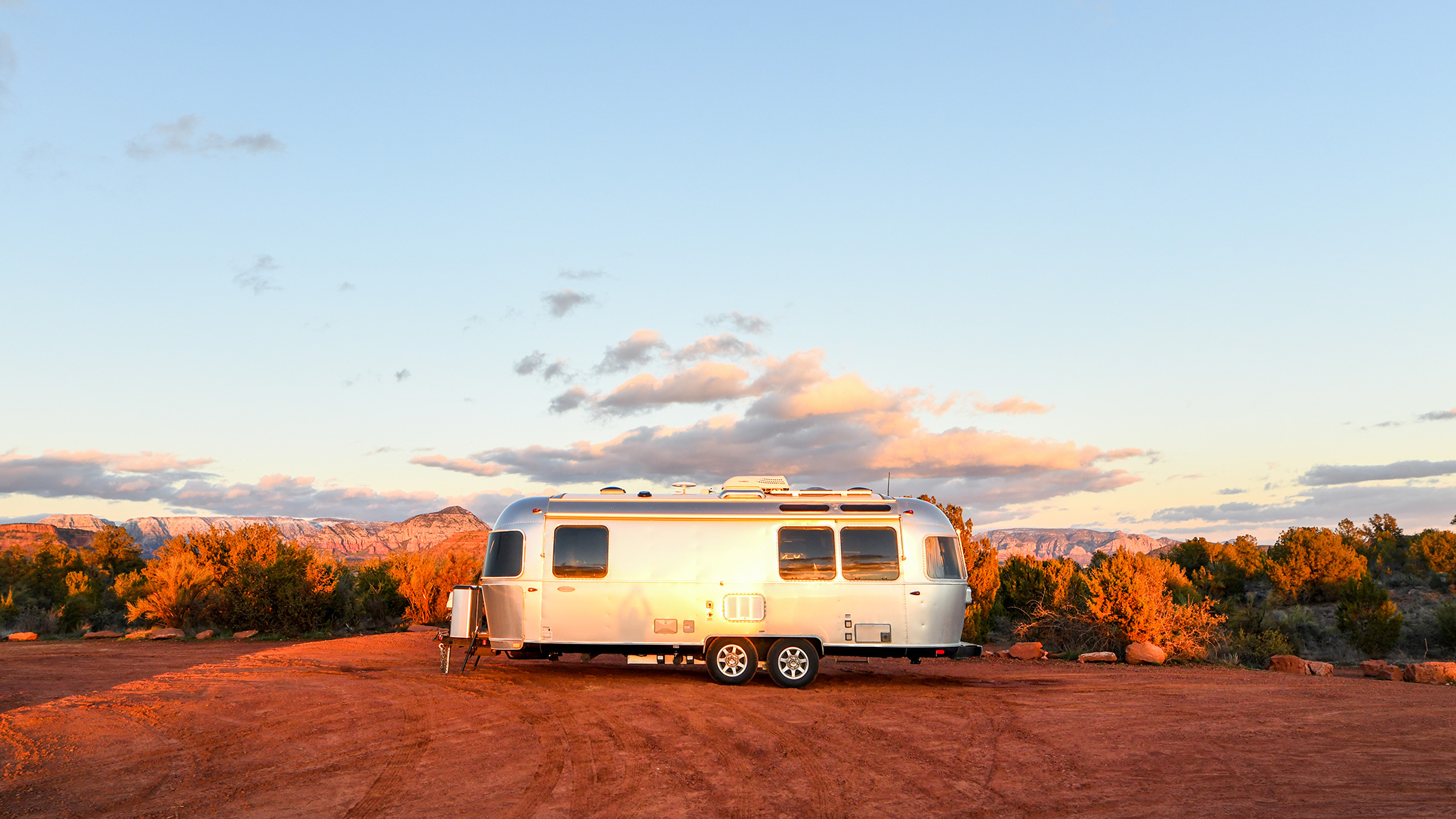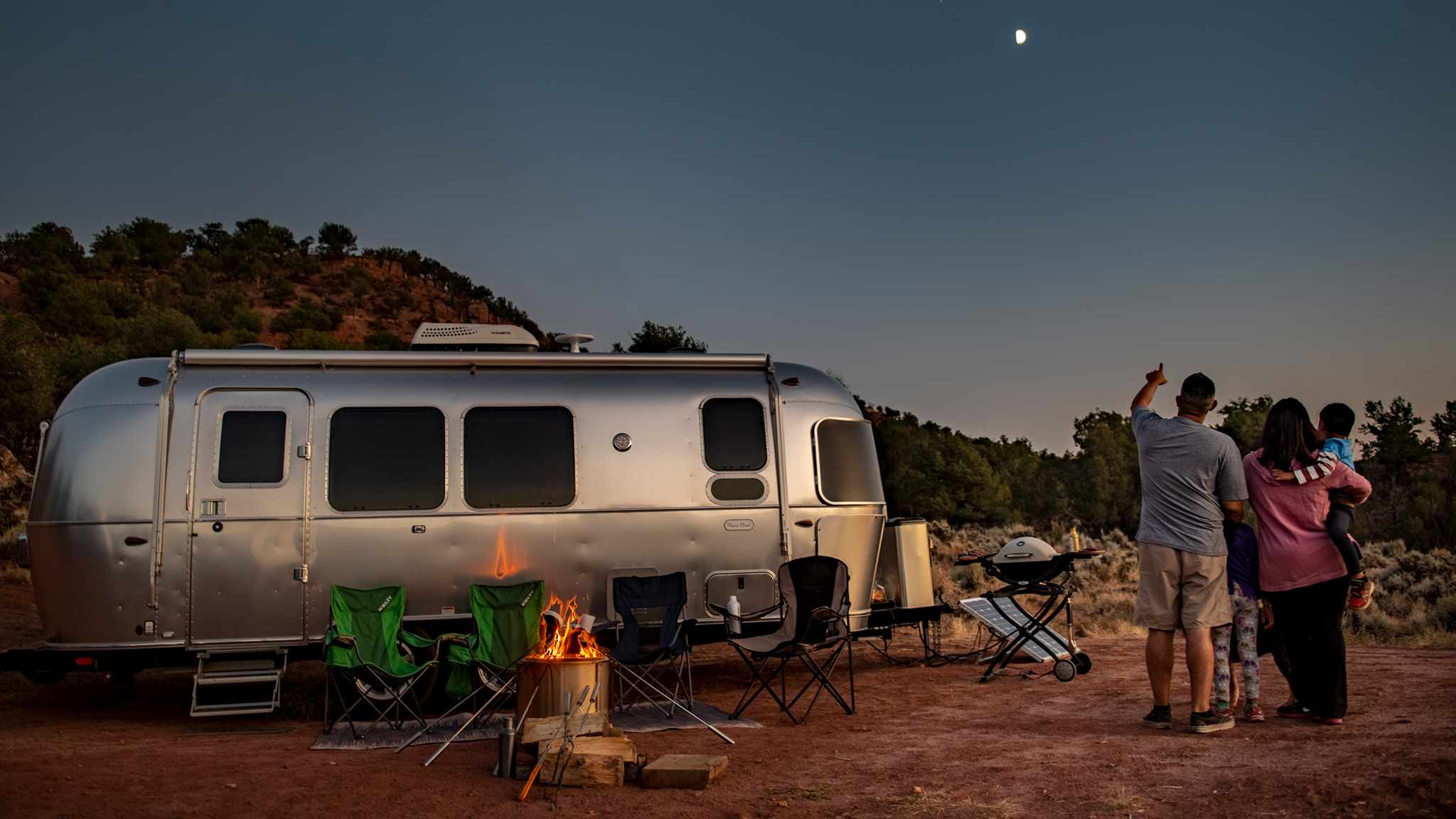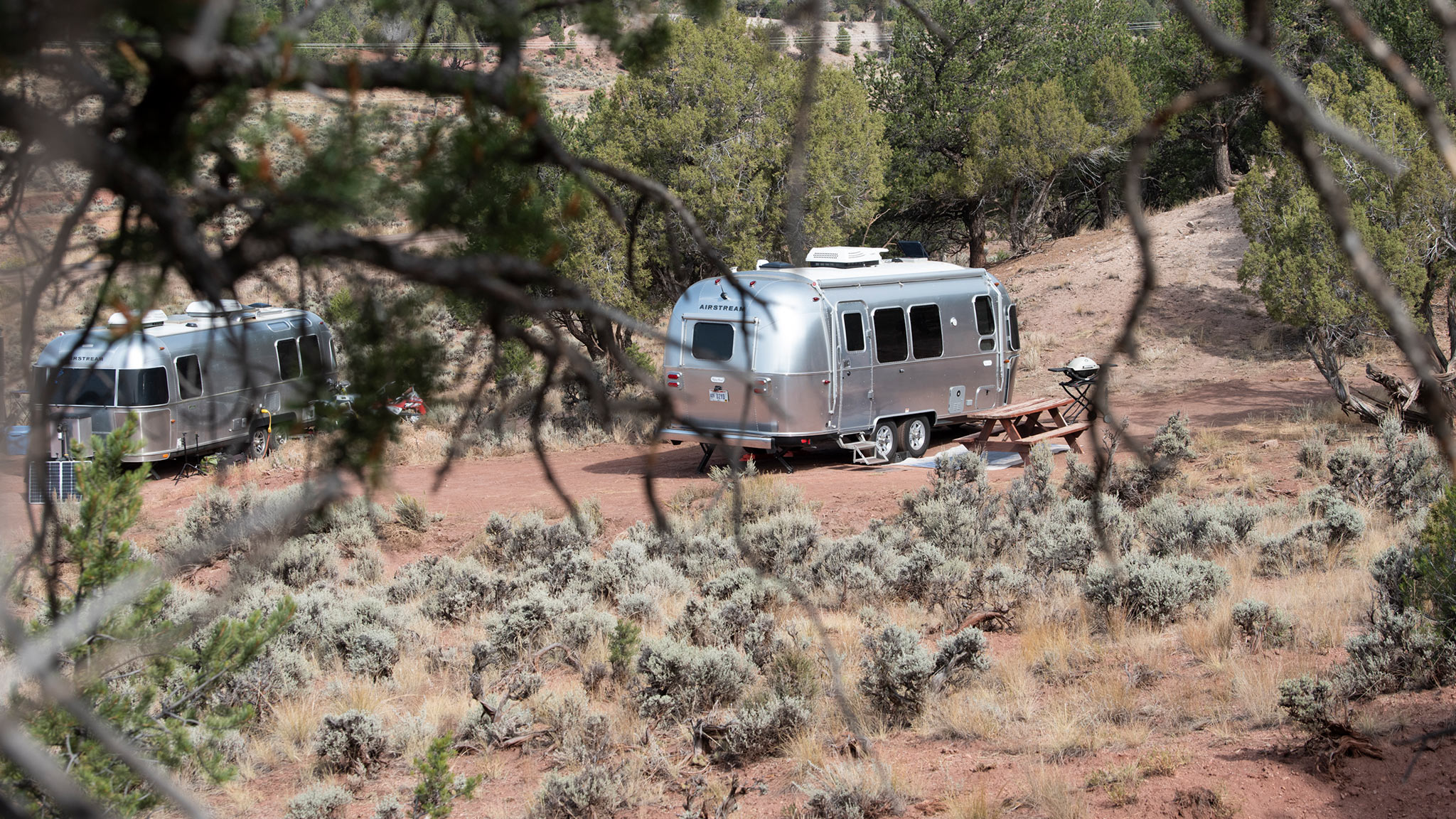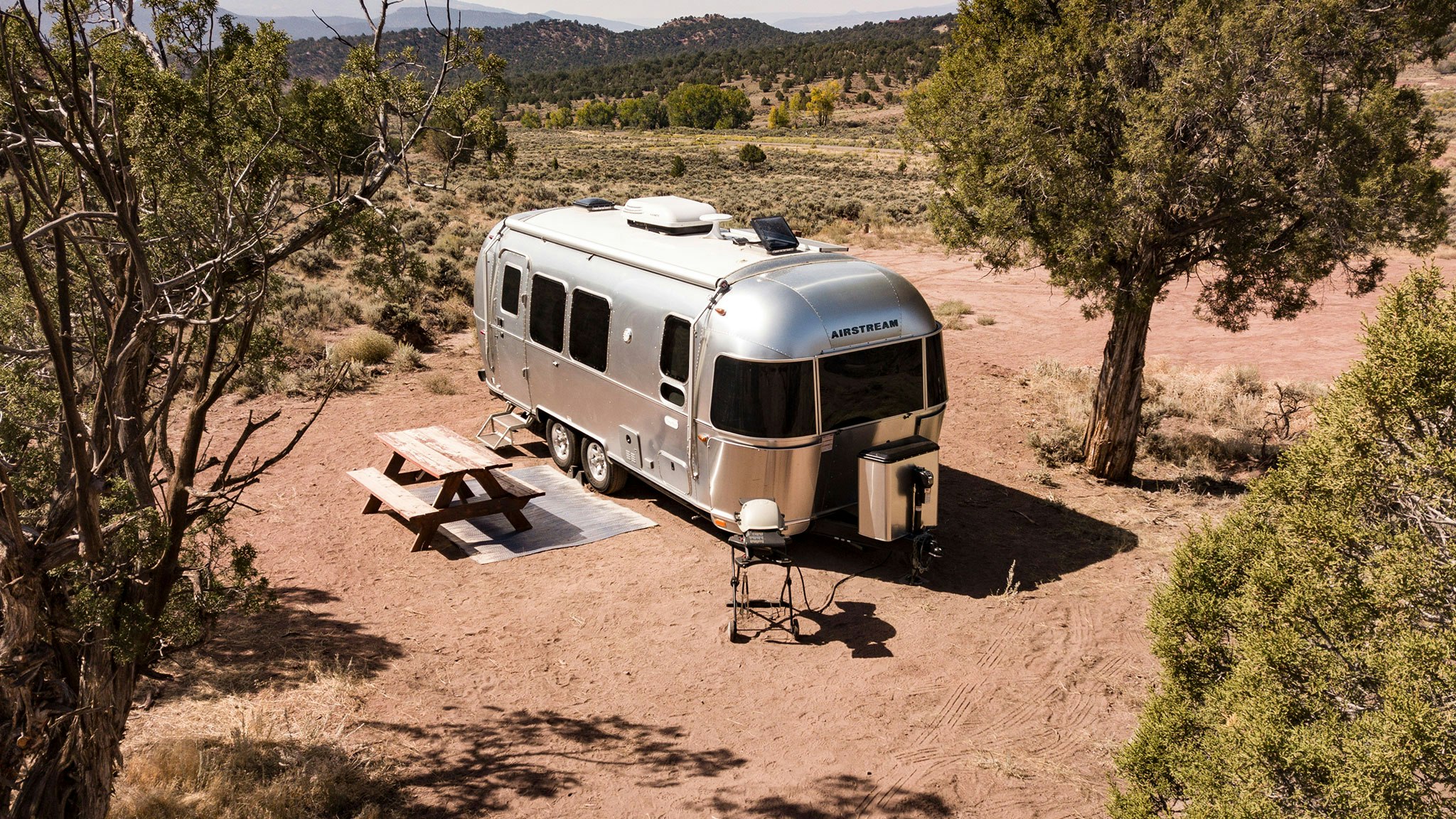Where’d all the water go? Probably down the drain, along with all of your hopes to boondock just a couple of more days. Don’t let this be you.
Boondocking is camping without connecting to water, electricity, or sewer. It can include dispersed campsites on BLM (Bureau of Land Management) land or wild camping in a secluded spot off-the-grid. It's a favorite among seasoned Airstreamers who want to get away from the crowds, explore the untamed wilds off the beaten path, and take control of their camping experience. But for the Airstreaming newbie, boondocking can be a daunting challenge. How do I monitor my tanks? How do I wash the dishes? Should I take a shower?
With a little practice and a few pro tips, the thrill of camping off the grid becomes more than just accessible – for many it becomes the preferred destination.

The Benefits of Boondocking
Sure, we all love a hot shower after coming back in from a hike. But if you really want to get out in nature, boondocking off the grid is your best bet. Oftentimes, you find yourself in beautifully remote areas where you can spend a week or two relaxing in nature. Most boondocking spots are more spread out than what you would find in a traditional campground, so you have some extra space to call your own. And the Airstream community online is full of great resources for finding the perfect dry camping spot.
It's important to remember that when you are enjoying these secluded, off-the-grid locales that your resources are limited, most notably your water. Although you may be parked by a peaceful babbling brook or alongside a vast lake or small pond, this is not always the case. Most of the time, you will be limited by the water in your freshwater holding tank.
Think of all the ways you use water at home – cooking, cleaning, showering, flushing the toilet, washing your hands, and drinking. When your resources seem virtually unlimited, it's easy to take them for granted. But when you have a finite amount of water, you need to be aware of how you can manage your usage. You're the captain of your Airstream ship, and you're in charge of how you manage your limited resources. The feeling of self-satisfaction that comes with boondocking – and Airstreaming in general – is one that many travelers value above all else.
Luckily, there are many ways you can conserve water, so you don’t have to rush off to refill your tanks before you’re ready.


10 Airstream Water Conservation Tips
- Bring extra water for drinking. This is especially helpful if you are planning on staying off the grid for a week or more, and/or you have multiple beings relying on your Airstream’s water supply. How much extra water you decide to bring will vary depending on the season and your circumstances. Invest in large capacity portable water jugs that you can carry in your tow vehicle if you want to extend your time in the wild.
- Manage your water flow. Don’t leave the water running. If you're brushing your teeth, shaving, or rinsing dishes, only turn the faucet on enough to create a slow stream. Turn it off when you aren’t actively using it.
- Gather excess water. If you are waiting for the water to get hot, gather the water in a jug or basin for later use. Keep a plastic basin or bowl in the kitchen sink to catch the water leftover from rinsing dishes. This water can be used to get dishes wet before scrubbing and even used to help flush the toilet. In most cases, your black water tank is larger than your gray water tank, so repurposing water so it goes into the black tank also helps ensure you don’t overfill your gray tank.
- Scrape your dishes into the trash. You don’t want to waste water scrubbing stuck-on food off of dirty dishes. You want them to be as clean as possible before you start washing.
- Use fewer dishes. You can save a lot of water by cooking one-pot meals. Use a napkin instead of a dish when you can. Share a knife for cutting meat. Don’t use a spoon and a fork when you can get away with only using one.
- Reduce your need for water in the kitchen. Eat sandwiches for lunch, and use a napkin instead of a plate. Consider steaming vegetables instead of boiling them. When making pasta, don’t overfill the pot. Use non-stick, easy to clean pots and pans.
- Shower less. Or, don’t shower at all. Showers use A LOT of water. Resist taking a shower every day. If you a shower is necessary for cleaning off after a particularly dusty or muddy adventure, try to shower with short bursts of water while soaping up in between. Otherwise, consider wet wipes, a mist pottle for a sponge bath, try dry shampoo, or wash your hair in a bowl. Use less soap, so it doesn’t take as long to rinse. Put a catch bucket under the faucet while you are waiting for the water to heat up, and use the water for other purposes.
- Have a rinse cup for shaving. Instead of needing to turn the water on every time you rinse your razor, use a rinse cup. You can even catch a bit of water in the sink. Or plug the tub while taking a shower, and use the excess water for shaving. You might even consider not shaving for a couple days and work on your mountain man look.
- Use less water to flush. Use only the water necessary to adequately empty the contents of the bowl. Depending on your level of comfort, consider only flushing when solid waste is present. A bit of water in the toilet to start with will encourage solids to flush down completely. If you want to go a bit feral, consider relieving yourself outside. Just use leave no trace practices. Bury your waste at least six inches deep and 200 feet from any water source, and collect dirty toilet paper in a sealable plastic bag.
- Don’t flush toilet paper down the drain. Flushing toilet paper requires more water. Consider keeping a plastic bag or small trash can with a lid near the toilet. You can deposit used toilet paper in the bag or bin instead of down the toilet.
How long you are planning on dry camping will determine how serious you get about conserving your resources. The more you boondock, the more you will get a feel for where you need to conserve and where you don’t.
Boondocking is a cool experience – one that's enjoyed by many campers every day. Don’t let resource conservation scare you away. Off-the-grid living takes some getting used to, but most people find it to be relaxing and restorative. You might even find yourself swapping tricks with other boondockers as you become a water-conserving pro.
Check out our full boondocking guide.
Airstream’s Guide to Boondocking is full of specific tips from real Airstream boondockers, including answers to boondocking FAQs, a whole section devoted to internet on the road, the pros and cons of all of your power source choices, and more.









